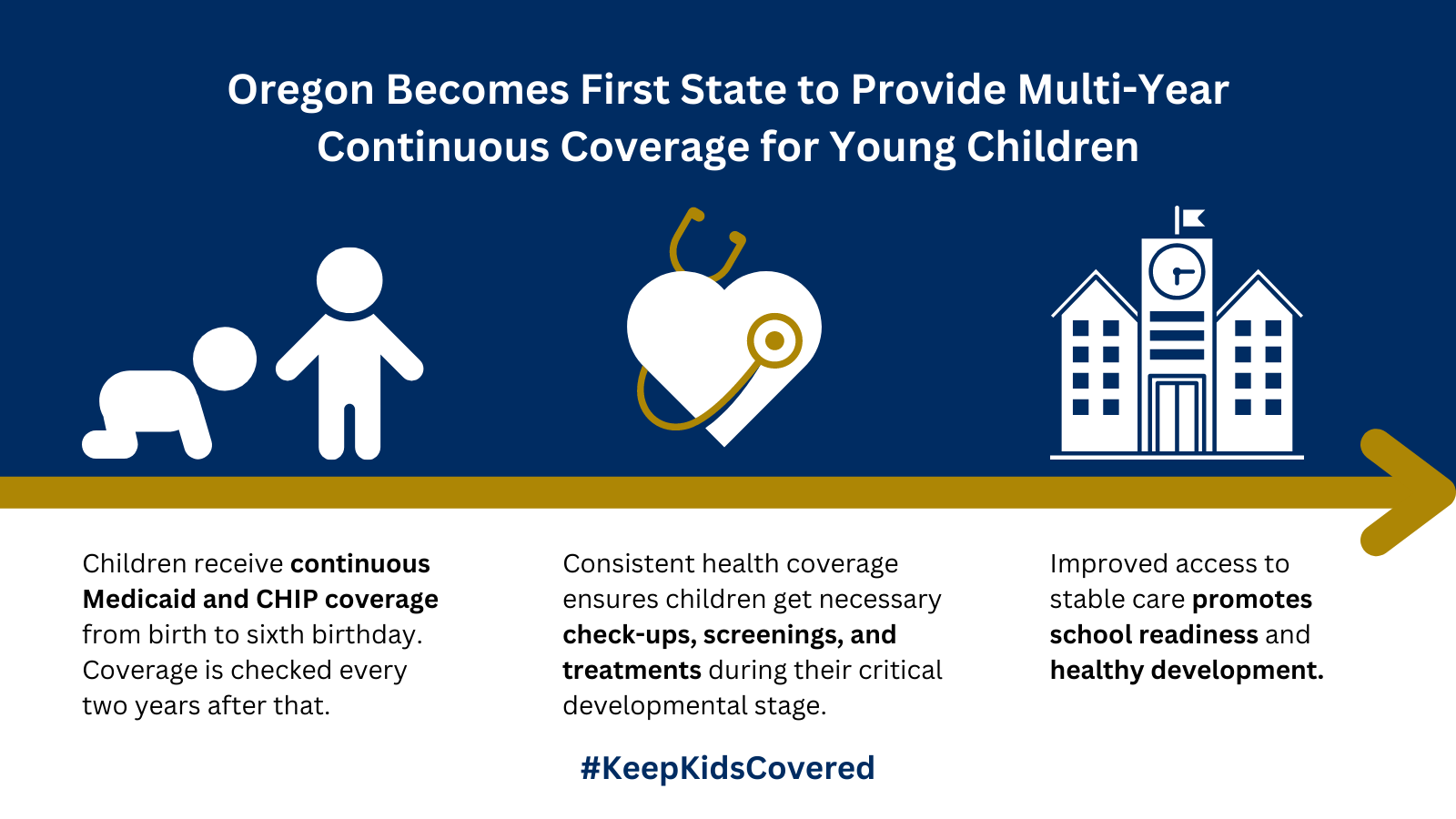The Biden Administration announced today that it will approve Oregon’s request to provide continuous Medicaid coverage to children from birth through age five and for two years for all Oregonians enrolled in Medicaid age six and up. This use of Section 1115 authority is precisely what Medicaid demonstrations are for — as we and colleagues have argued elsewhere. The financial protections and peace of mind for new parents whose children will have Medicaid coverage until they are school age will be a major new support for families with young children.
As regular readers of SayAhhh! know, millions of children are at risk of losing Medicaid coverage when the continuous coverage protections of the public health emergency lift – Oregon’s proposal moves in the opposite direction and creates an opportunity for transformational change in state approaches to covering children.
Say Ahhh! readers will recall that Oregon was the first state to formally propose this idea through its section 1115 waiver application in March of this year, followed by Washington’s application in July, which is still pending at CMS. In July, California lawmakers called on the state to submit a waiver application as part of the budget bill. New Mexico is the latest state to pursue this approach, as detailed in a draft of its 1115 demonstration application, which is currently up for state-level public comment.
With this new policy, Oregon will provide stable health coverage to children during the earliest years of life – when well-child check-ups are more frequent in order to monitor each child’s progress in meeting developmental milestones. Brain development is most active in this early childhood period, and the earliest interventions for identified risk factors or delays can prevent or more effectively mitigate costlier treatments as children age. But without health coverage, those early screenings and supports are more difficult to access on a timely basis or are missed altogether.
Multi-year continuous eligibility is likely to have a range of short- and long-term benefits for children in Oregon and elsewhere.
Keeps children covered. Gaps in coverage create gaps in care. New Mexico’s proposal detailed that more than 40% of children in MAGI eligibility groups that lose coverage reapply within 12 months. Washington estimates that 11% of children under age 6 have coverage gaps in a given year. Any gap in coverage exposes families to the possibility of large medical bills which can have severe economic consequences including bad credit and even bankruptcy.
Supports school readiness: Primary care pediatricians and family practice doctors are the most likely to see young children and their families before they reach kindergarten. Kids who don’t get the right care at the right time are less likely to enter school ready to learn. Untreated vision, hearing, mental or behavioral health issues can stand in the way of thriving in the classroom.
Supports health equity: Administrative “churn” is more likely to affect children of color. In August, a report from federal HHS projected that people of color and children will be more likely to lose Medicaid coverage for procedural reasons when the continuous coverage protection ends. Washington also notes that coverage gaps appear to fall disproportionally on children of color, when comparing lengths of White Hispanic children versus Black Hispanic children (p. 38).
Continuous coverage is also essential to improve health quality measurement efforts which is critical to meaningful efforts to address racial disparities.
Lowers administrative burdens on families and the state: Washington and New Mexico both highlight that multiple years of continuous coverage would lessen the administrative burden on the state:
Continuity of coverage for young children provides an essential base for providers and health plans to focus their efforts on primary and preventive care and early diagnosis and treatment of problems that will improve long-term health and wellbeing (Washington, p. 38).
[The State] will not need to spend administrative resources currently associated with eligibility re-determinations, thereby reducing costs and allowing staff to focus on services that provide more value to our members. (New Mexico, p. 33)
Georgetown CCF has extolled the virtues of continuous coverage for many years, and we could not be more excited to see this policy moving forward. Continuous coverage will not by any means solve all of the health-related challenges that young children face – particularly children of color. But it takes a major barrier off the table for families and allows states and providers to shift focus to other issues. It also enhances the economic security of young families during a time of rising costs. We hope that this breakthrough moves the country closer to a day when no child – especially a newborn leaving the hospital – is uninsured.


